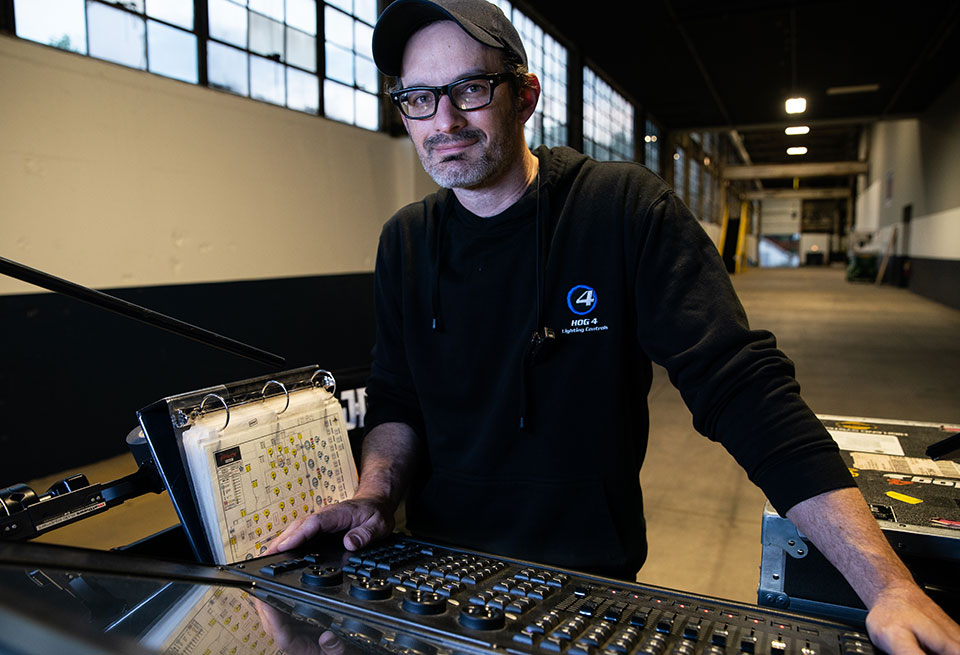Jared Moore Keeps Hogs In The Television Spotlight
Date Posted: 6/28/2021

For all six seasons of Fox’s award-winning television series Empire, lighting programmer Jared Moore used a variety of Hog control products for the show’s diverse performance settings and other scenes. The American musical drama was one of the most-watched series during its long run through 2020. After a quick run on the US shoot for Warner Brothers The Batman, Moore next turned his focus to work on Power Book IV: Force, Starz's spin-off based on original Power character Tommy Egan.
Jared began his career in 2002 as a freelance LD in Chicago, coming of age through the theater scene and designing for a modern dance company on ETC desks. In 2013 he transitioned into television and film work, where he learned of the Hog platform. He says, “I was told by another programmer that all the film guys used Hog. I worked on the ABC show Mind Games where I used a Hog III - that’s where I learned the console. Transitioning to the Hog 4 platform when I booked the Empire gig was a natural step.”
As an IATSE Local 476 member, Moore’s resume saw him brought in as lighting programmer for the opening 2015 season of Empire. Still called a ‘dimmer op’ in the film/television world, he was a production constant through the series, working with various DPs and gaffers, and eventually purchasing his own Road Hog 4 desk. “I was even in the backgrounds for a few scenes,” he laughs, “as part of a quick clip. The director wanted a shot of somebody pressing a button. That was the joke – me in the background!”
“I knew Empire was going to be a cool project because it dealt with the music industry - like a soap opera drama but with a concert live aspect. As the show evolved budgets, concepts and performance all got bigger. We used more and more gear and refined the system through the seasons, and Hog lighting control was a big part of that. We usually had two or three music performances in each episode, and I needed the Hog and multiple DP 8000’s to handle 40+ universes.”
Moore more recently purchased an HPU from his preferred console vendor LightParts, and occasionally relies on the Hedgehog 4X as a location-based console. However, he says the Road Hog 4 remains his most valuable control tool. “Because we were changing locations so much the size was very important. I could pick it up and move it by myself. And the giant touchscreen is great! With my background as a lighting designer, the semantics of setting up the board doesn’t necessarily appeal to me, but with the Hog you just plug it in, get it going and grab control of these multiple universes, and be rocking in no time. I know I can get it going fast, and that’s why I like the Hog platform so much. And the Hog has never failed me! I grew up using ETC desks and often still do for normal stage sets. We still use a mix of ETC and Hog desks … Hogs for anything rock n’ roll or that has a high universe count as well as media servers.”
Jared says as Empire evolved, his Hog system with the DP8000 external processors allowed expansion and control of ever-increasing fixture counts. “Sometimes we’d go into a club around the city to shoot a performance and I’d grab their rig as well as install my own, and we tended to use a copper-based network – console to DP8K to DMX out. The thing with film is that the continuity must always be there. We would shoot a concert from all different sides and different sizes, and when they’d cut away to a dialog scene, they’d dub the music out! That’s when I learned time code and got into the Hog Time Code Widget. I relied heavily on that for the later seasons, so performances would play back precisely each time.”
In closing, Moore says that his work on Empire was a fabulous experience and learning ground. “In any shoot, the Director of Photography is the #1 boss, along with your gaffer who serves as onsite LD, so there’s a chain of command. But people started to realize that I was a designer at heart, and began to give me artistic input that other programmers might not get. I wasn’t just pushing buttons – that was great!”